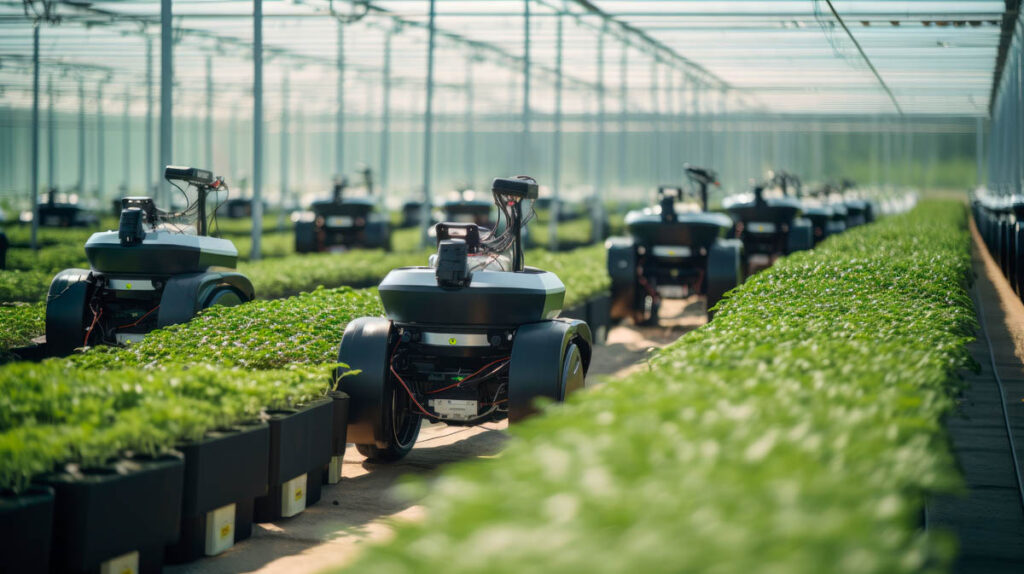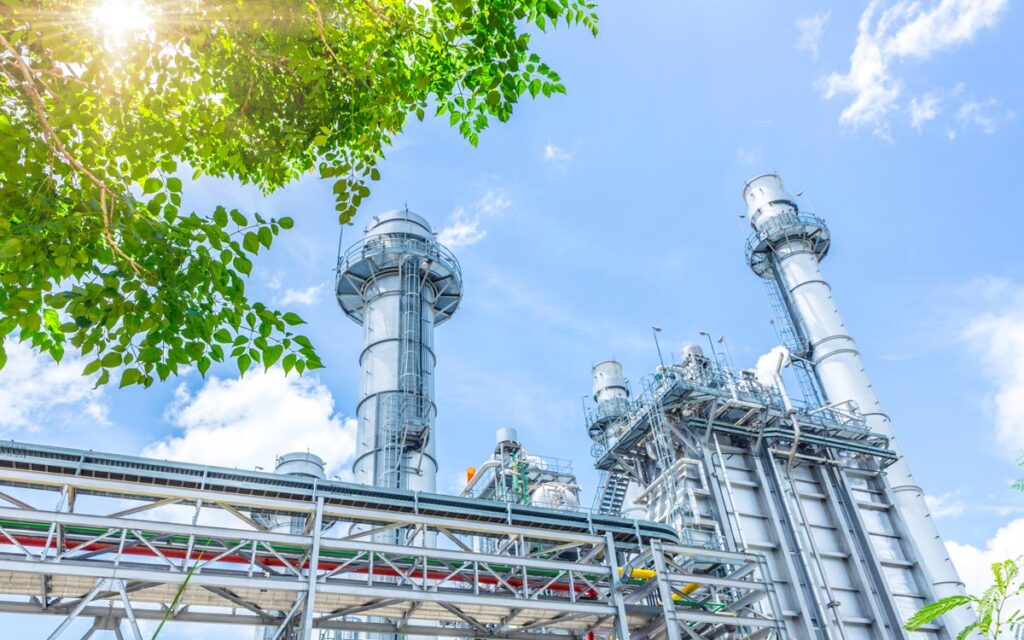Progress towards the Circular Economy in Industry

Far from being a mere trend, the industrial circular economy is a fundamental part of the roadmap to environmental, economic and social sustainability. Thanks to it, factories can reduce waste, increase efficiency and create long-term sustainable value. Learn how circular economy redefines sustainability in industry and improves operational efficiency The adoption of industrial circular economy processes allows factories to evolve towards a resilient and adaptive economic model, two vital elements in the transformation that is taking place in the so-called Sustainable Industry 4.0. The circular economy principles are one of the keys for companies in the industrial sector to obtain a greater number of advantages such as a industrial waste reduction, establish processes for circular supply chain, a sustainable resource managementThe company’s brand image has been strengthened and costs have been reduced. Moving towards an industrial circular economy The development of circular business models requires establishing a defined sustainability strategy and monitoring the progress of its actions. ESG managers in companies can be helped by partners such as aggity and a platform such as GreenwAIs by aggity, which enables them to drive decarbonization and sustainable innovation, including innovation in the circular economy. Having the knowledge and experience of a partner such as aggity and the support of technology allows the factory to analyze the complete life cycle of the products and to identify waste reduction opportunities y industrial recyclingincluding material procurement, production, use and disposal. This initial study will enable organizations to adopt circular production systems. Design for reuse Improving resource efficiency in manufacturing is one of the objectives pursued by industrial companies and must be taken into account from the very moment the product is designed. Therefore, design for reuse and recycling is a fundamental principle of the circular economy, which seeks to reduce the product’s carbon footprint maximizing the durability and useful life of products, as well as facilitating their repair and reconditioning. This parameter is the exact opposite of planned obsolescence, since the aim is to ensure that products last as long as possible and that, in the event of failure or wear and tear, they can be repaired. In addition, this design phase seeks to use materials that can be easily separated and recovered, thus contributing to the reuse of materials in the industry. In this way, it is not only possible to achieve a better valorization of industrial waste, but also to increase the productivity of the factory and a significant reduction in manufacturing costs. Digitization technologies Circular economy and digitalization are two concepts that go hand in hand. More and more manufacturing plants are employing technologies such as Industrial Internet of Things (IIoT), Artificial Intelligence (AI) or blockchain to achieve greater traceability, transparency and efficiency in the management of resources and materials along the supply chain. This provides a complete product life cycle analysisThe product’s life cycle is completed, from the design phase to the distribution phase, ending at the moment when its useful life cycle is fulfilled and the materials are separated for reuse, thus closing the product’s life cycle. Policies and regulations Regulations are an important factor to consider in the circular economy in manufacturing. These regulations are becoming increasingly numerous and demanding, and failure to comply with them can lead to heavy fines. But also, many of these laws incorporate recycling and reuse targets, as well as tax incentives to promote industry adoption of sustainable practices, energy efficiency standards and waste management. All of these regulations seek to promote a circular economy environment by setting eco-design standards and recycling targets. The European Union (EU) is the political-economic area that has placed most emphasis on developing circular economy standards with regulations that, for example, require electronics manufacturers to design devices that are easier to repair and upgrade, thereby reducing the generation of waste electrical and electronic equipment (WEEE). Similarly, EU countries are subject to packaging and packaging waste regulations that aim to reduce the use of disposable and single-use plastic packaging, and promote reuse and recycling through the use of compostable materials, among others.
Supply chain sustainability for the future

The irruption of sustainability in the supply chain is an essential element in the strategies of companies that are implementing sustainable practices, not only for ethical reasons, but also as an element to improve their competitiveness and differentiation. Learn how to implement sustainability in the supply chain to improve efficiency and accountability. Betting on the sustainability in the supply chain The list includes different sections, ranging from selecting suppliers that follow green logistics practices to the optimization of logistical processes in the corporate carbon footprint reductionand the promotion of the circular economy in manufacturing through recycling and reuse of materials. The great advantage of having a environmental model as a pillar of business digitalization is that, by integrating sustainability into every link of the chaincompanies not only contribute to the environmental protectionThe company also generates significant savings that have an impact on its income statement, improves relations with shareholders and customers, and obtains a competitive advantage sustainable over time; in addition to to comply with the regulations. A greener supply chain The adoption by organizations of sustainability processes in the supply chain must be carried out by taking a series of steps to achieve the objectives set. For this reason, companies should first conduct a thorough supply chain analysis to identify areas where sustainability policies can be improved. Typically, the aspects to be taken into account focus on conducting environmental audits for suppliers, analyzing carbon footprint, checking energy efficiency in transportation and analyzing the sustainability of waste management in operations. Selection and evaluation of sustainable suppliers Once the main areas for improvement have been identified, it is time to establish clear sustainability policies that define the environmental, social and governance (ESG) objectives to be achieved. Sustainability policies should be communicated as clearly and simply as possible to all levels of the organization, as well as to the company’s supply chain partners. In this regard, one of the most important aspects is the selection of suppliers that include sustainable practices in their activities. Many of them will have some type of environmental environmental certification in the industry in which they operate, but even so, it is advisable to carry out a study of each of them to check that their sustainability practices are aligned with the objectives they wish to achieve. This point is very important as collaboration with sustainable suppliers will allow the organization to reduce its reputational risk and improve transparency in its supply chain. Other points to consider There are other aspects that should be taken into account when developing a sustainability strategy in the supply chain that will improve social responsibility in businesses of all types. One of them is the optimization of logistics processes. Since transportation is a major source of greenhouse gas (GHG) emissions in many supply chains, reducing the distance traveled and increasing distribution efficiency has a significant impact on environmental sustainability. Strategies to optimize logistics processes include consolidating shipments, using more efficient means of transport or developing more direct routes. Likewise, to improve sustainability in the supply chain, companies are promoting the development of the circular economy. Integrating this approach into the supply chain enables companies to reduce their dependence on natural resources and mitigate both the risks associated with raw material scarcity and reduce their environmental impact. In this respect, organizations are also investing in packaging innovation. packaging innovation reusable materials are being used. In doing so, they not only achieve an improvement in sustainability, but also a significant reduction in costs. Use of sustainable technologies Incorporating green technology for sustainability, including from the use of sustainable materials to the use of energy management systems, is the path to a greener and more efficient supply chain. And, along with the implementation of green technologies, the use of a platform for decarbonization such as GreenwAIs by aggity is fundamental, as it allows the development of new ways of working to improve energy efficiency, reduce resource consumption, minimize environmental impact and report in compliance with regulations.
How to obtain environmental certifications in factories

Environmental certifications are of great importance to plant and production managers of a factory. Their value lies in the fact that they endorse the company’s commitment to sustainability and also meet consumer demand for responsible business practices. Achieve sustainability and enhance your reputation with environmental certifications. Discover the process step by step. The importance of obtaining environmental certifications is growing because, in addition to benefiting the environment, they strengthen the brand image with shareholders and customers, who see how sustainability is an essential pillar of the company’s philosophy. Environmental certifications such as ISO 14001 or LEED are some of the most valued in industrial environments by providing a structured framework for achieving industrial sustainability goals set by company management bodies. These environmental certifications allow the Smart Factory to be a Sustainable Smart Factory by complying with environmental regulations for industries, improving environmental management in manufacturing, obtaining a reduction of the product carbon footprint or establish a correct environmental corporate responsibility strategy. What are industry certifications? But what are industrial certifications and why are they important for the development of a factory? This is a set of recognitions granted to companies by a series of independent and accredited certifying bodies (such as ISO, LEED or TÜV) that are responsible for verifying that the criteria established for each type of certification have been met and that they demonstrate the the company’s commitment to sustainable practices. These environmental certifications may vary in their requirements, but mainly focus on the industrial organization adopting measures to reduce the consumption of natural resources and minimize waste and CO2 emissions, as well as committing to sustainable innovation. sustainable innovation to improve, among other things, its energy efficiency. How to achieve certification Achieving industrial energy certification requires a process in which the company must take a series of steps, including the performance of environmental audits in the industry. Therefore, it is necessary to start with an internal audit that shows the energy efficiency in production. In this environmental audit, the company will conduct an analysis of its practices and processes to identify areas for improvement in terms of sustainability. A platform such as GreenwAIs by aggity makes it possible to discover which processes can be improved to achieve a more sustainable factory. Once this audit has been carried out, it is necessary to analyze the environmental certification to be achieved. At this point it is important because certification is not the same. ISO 14001more focused on the sustainability of a plant’s activities than on the sustainability of its operations. LEED certification for factorieswhich places more emphasis on energy efficiency, the responsible use of water or the materials and resources used by the company to carry out its manufacturing processes. Planning and commitment Once these two tasks have been completed, it is necessary to establish a series of clear objectives. These sustainability objectives must be realistic and achievable because, if they are not, it will be impossible to achieve certification, which entails a significant economic cost. From here and with the information obtained from the environmental audit, the organization will be able to implement the measures focused on achieving the certification it has chosen. Some of these measures may include the incorporation of circular economy processes in the industry; establishing procedures for saving energy or water; minimizing the carbon footprint o to bet on the implementation of green technologies in their production processes. After all these actions have been carried out, it is time to prepare to apply for certification. To this end, the organization undergoes an external audit by an independent certifying body. During this process, the certifier will verify that the requirements are met and if so, certification will be granted. Continuous improvement Obtaining any certification does not mean that the organization stops its sustainability strategy. The sustainable automation The use of renewable energies for the industry, ensuring the sustainability of processes or implementing strategies for efficient waste management are just a few of the improvement actions that can be further implemented. In fact, commitment to continuous improvement in environmental management is a key element in achieving a fully sustainable industry, with less environmental impact and optimized production processes that are more efficient, both from an economic and environmental point of view.
Environmental model as a pillar of business digitalization

Implementing an environmental model in digitalization processes is a strategic pillar for companies seeking to meet sustainability standards and improve their competitiveness. This approach is an opportunity to optimize processes, reduce costs and strengthen the corporate image in the face of a consumer who is increasingly aware of the environmental impact of brands. Implement an environmental model to lead in business digitalization and promote sustainability and efficiency. In this article we explore how the environmental modelcontributes to improve the digital transformation projects in which companies are immersed and what changes can be implemented to benefit the company’s environmental policy and also its operational efficiency. Today, most organizations are addressing corporate sustainability as one of their strategic pillars. Therefore, sustainable digital transformation is an element that is increasingly taken into account, in the same way as process optimization or productivity improvement. Incorporate an environmental model into the corporate culture One of the most important elements when implementing an environmental model in the digitization of an organization is to incorporate it into the corporate culture. This aspect is crucial, since the sustainable innovation with practices such as circular economy or the use of clean technologies are becoming increasingly important for customers, who are very aware of the absence or presence of sustainable policies when deciding to contract a service or purchase a product. For this reason, it is essential for companies to develop a corporate culture by senior management so that it permeates all levels of the organization. In addition, the steering committee’s commitment to sustainability sends a message about the company’s values that will influence the rest of the departments. By incorporating the environmental model into the company’s corporate culture, employees will feel more committed to the business strategy and will be more motivated to contribute to its success. Clear objectives and goals If corporate social responsibility or corporate culture play a crucial role, when implementing an environmental management model in companies, it is also important to define the objectives to be achieved and the benefits it can bring to the organization. These objectives will depend on several variables and the sector in which the company operates. It is not the same for a logistics company, whose goals will be, for example, to make its fleet more sustainable through the use of carbon footprint reduction of its vehicles, than a company operating in the industrial sector, whose primary objective is to achieve greater energy efficiency in manufacturing processes. Implementation strategies Business strategies incorporating so-called green innovation must be designed to integrate sustainable practices into all aspects of the company’s operations. In order to develop the strategy that will lead to the implementation of an environmental model, it is necessary to have knowledge of the starting point. It is therefore necessary, among other things, to identify the areas that have a high consumption of resources, analyze the carbon footprint and know where the greatest volume of CO2 emissions is being produced or know in detail the type of waste management that is being carried out. In this way, and with the help of the technological tools that are part of the GreenwAIS by aggity platform, areas for improvement can be identified and clear and achievable objectives can be set. Monitoring and evaluation If all the above points are important, the subsequent actions are no less important. For this reason, it is also essential to establish monitoring and evaluation systems to measure the progress of the strategies and the results obtained with the solutions implemented to verify that the objectives set are being met. Thanks to environmental monitoring and data analytics, the company also has the capacity to make intelligent decisions, develop appropriate actions to improve the environmental model and evaluate its impact. With all these actions of sustainable digital transformation, companies manage to reduce their environmental impact and improve the operational efficiency of the organization, in addition to strengthening the corporate image, since it will have access to obtaining various environmental certifications that will improve the relationship with the customer.
Sustainable automation for manufacturing efficiency

Sustainable automation is going to become one of the essential elements of the digital transformation of different productive sectors, including the industrial sector, since manufacturing processes, in addition to being increasingly efficient, must also be sustainable. Explore how to implement sustainable automation to transform your production plant towards greater efficiency and lower environmental impact. Sustainable automation is one of the elements that are marking the evolution of production and manufacturing processes. Driven by different technologies such as robotics or the Internet of Things (IoT), companies have been incorporating different automated systems into their manufacturing processes to perform a wide range of tasks faster and more accurately. The incorporation of automation has enabled companies to reduce production times and establish more flexible and demand-driven manufacturing processes. The importance of sustainable automation Automated processes have been embedded for some time, but it is only now that industrial organizations are beginning to improve those processes to incorporate the sustainable automation. With this development, they intend to achieve advantages such as improved energy efficiency in manufacturingoptimization of the industrial waste management and a clean and sustainable production. Achieving sustainable automation involves incorporating different technologies, both to improve old processes and to manage the energy consumption of the different production processes. These are some of the most important elements that companies incorporate to achieve sustainable automation. Integration of intelligent technologies Companies are employing different types of green technologies in industry in order to achieve a green supply chain optimizationreduce waste in order to promote circular economy in manufacturing or achieve different green certifications for companies that also contribute to improving your reputation and brand image with your customers. Among these technologies is the Internet of Things (IoT), which allows companies to obtain a global vision of their production operations in order to identify and solve problems that may occur and, thus, reduce maintenance costs, among others. A solution such as Smart Factory by aggity provides the global vision that is so necessary to, for example, achieve green supply chain optimization. In addition, the use of Artificial Intelligence (AI) improves product quality through its ability to identify and correct defects in real time during the manufacturing process, thereby reducing waste and costs. Energy efficiency In the binomial digitalization and environment, energy efficiency is one of the elements that companies want to improve the most because, in addition to making them more sustainable, it will allow the implementation of automation solutions to improve energy consumption more efficiently. For this purpose, in addition to using renewable energy sources, they use Environmental Management Systems (EMS) and various intelligent sensors that constantly monitor energy consumption and pollution levels in real time, allowing potential areas for improvement to be identified and measures to be taken to correct deficiencies. Continuous evaluation and improvement Corporate social responsibility (CSR) in industry is becoming increasingly important among the companies that make up the sector. Within this strategy, continuous monitoring, and specifically environmental monitoring, is an essential element, as it allows the environmental impact of automation to be regularly evaluated and practices to be adjusted to maximize efficiency and sustainability. It is also important to train employees in new technologies and sustainable practices to ensure that they can efficiently operate and maintain sustainable automation systems. Predictive maintenance Predictive maintenance plays a crucial role in the implementation of sustainable automation processes as it improves operational efficiency, reduces waste of resources and improves energy efficiency. Its great advantage as opposed to reactive maintenance, which responds to breakdowns and failures once they occur, predictive maintenance relies on the use of real-time data to predict when errors or failures may occur in production machines. In this way, problems can be solved before they arise, which leads, among other benefits, to a reduction in the costs associated with repairs.
EMS: the ally for a sustainable factory

Environmental Management Systems (EMS) are essential to make factory operations more sustainable and efficient. A well-implemented EMS is a transformational change for production plants. Explore how environmental management systems (EMS) can help make production more sustainable and efficient; find out the keys here. The environmental management systems o SGA are not merely a new technology, although they benefit from it, but a comprehensive management philosophy that seeks the optimization of natural resources such as energy, water and raw materials; to improve the industrial waste management and pollutant emissions; to prevent environmental accidents or to increase the energy efficiency in industry. One of the great advantages of EMSs is that they can be integrated into a plant’s daily operations, examining success stories and providing practical recommendations. In this article we will discuss how to maximize process efficiency and sustainability through the use of EMS. Environmental policy The development of policies to improve corporate sustainability is one of the areas where EMS environmental management systems can help. These systems provide clear guidelines and internationally recognized standards, such as ISO 14001, which serve as the basis for sound environmental policies. At this point, the communication of these policies across all divisions of the organization is important because it ensures that the implementation of eco-efficient strategies for the industry is successful. Planning The first step in integrating corporate sustainability into the smart factory is to understand the impact its activities have on the environment. EMSs are used to plan, identify and evaluate the environmental aspects of industrial operations. From resource consumption to waste generation management or product life cycle analysis, EMSs enable companies in the industrial sector to understand how their actions affect the environment. Legal compliance The area of environmental legality and compliance is one of the areas in which EMS environmental management systems stand out, as they provide a structured framework for identifying and understanding the legal obligations that affect the smart factory in relation to the environment. This includes laws on waste management, carbon footprint reduction and carbon footprint reduction, or resource conservation. carbon footprint or resource conservation. Training and awareness Train and sensitize all employees on environmental practices and their role in the EMS. At the same time, environmental management systems facilitate employee training and awareness by providing a structured framework for the implementation of environmental education programs. Operational control EMSs help to have control of daily activities that can have an impact on the environment. This control makes it possible to know what clean production technologies are being used or how to improve eco-innovation in production. Operational control allows the implementation of practical measures and procedures to manage the environmental aspects identified during initial planning. This may include the adoption of cleaner and more efficient work practices, the implementation of solutions such as Planet Together by aggity that help to establish eco-efficient strategies for industryoptimize the resources used in the production processes or that help the company’s emission reduction in manufacturing. Monitoring and measurement The establishment of a sustainability policy is a continuous process of improvement. EMSs allow environmental monitoring and reporting to analyze the company’s environmental performance. Using the data and subsequent analysis, companies can identify areas for improvement and adjust their policies and procedures as necessary to ensure their effectiveness over time. Monitoring must be continuous as it is the only way to identify opportunities for improvement in corporate environmental responsibility. Auditing and continuous improvement Conducting an environmental audit to ensure compliance with the EMS and continually seeking opportunities to improve the organization’s environmental performance should be a priority for companies. These types of reports not only seek to ensure compliance with environmental laws, but are also useful for measuring progress in achieving environmental objectives or identifying areas for improvement to optimize environmental performance.
Optimal renewable energies for the industry of the future

This post presents an analysis of the best renewable energy options in the industry. In a context of evolution towards Industry 4.0, clean energy sources are essential to make industrial environments both more efficient and sustainable. Discover the most effective renewable energy sources to move towards sustainable industrial production. Renewable energies in industry are adapted to the different sectors and production contexts of each smart factory. The choice of each energy source will therefore depend on several factors. Thus, for example, solar photovoltaic energy will be perfect for factories with large roof spaces in industrial plants, while industrial sustainability will be improved in facilities located in places with constant air currents. The amalgam of solutions that improve energy efficiency in the industrial energy efficiency in the industrial sector is wide-ranging. In recent times, many companies in the industrial environment are relying on the potential provided by applied geothermal energy and many factories are also betting on the versatility of industrial biomass, capable of obtaining energy from biological waste. We analyze the advantages provided by each of them. Photovoltaic solar energy Industrial solar energy is one of the most widely used green energies among companies that want to improve energy efficiency in factories, a key aspect covered by the Smart Factory by aggity solution. In general, companies that opt for this type of energy source when it comes to increasing their investment in renewable energy do so because it significantly reduces energy costs in the medium and long term. Although the initial investment may be high, solar panel technology and its implementation allows factories to generate their own electricity, thus reducing energy bills and offering the possibility of selling the surplus to the grid. Moreover, these panels have very low maintenance costs compared to other types of energy. However, the main problem presented by the photovoltaic solar energy is their dependence on sunlight, so electricity generation can be intermittent, requiring energy storage solutions or connection to the conventional grid on days when there is no sun. It is, in short, an effective energy system in areas such as southern Spain, where sunshine hours are abundant throughout the year. Another disadvantage of this technology is that it requires a large surface area for the installation of the solar panels. In general, the companies that are most committed to this type of green energy infrastructure are those with high energy consumption and continuous operations, such as those in the manufacturing sector. The energy transition in manufacturing seems to go through this type of energy source because they can use the electricity generated by the panels constantly and store the surplus for use in periods with fewer hours of sunlight. Wind energy Within renewable energies in industry and with corporate sustainability. corporate sustainability companies are also investing in the installation of on-site wind energy systems. As is the case with solar energy, the main problem with solar energy is that it is not The installation of wind turbines for industry has to do with the fact that wind is not a constant element, so this energy source is only advisable in places where this atmospheric phenomenon usually occurs. It should also be borne in mind that this is a solution that requires a very high initial investment, so the return on investment will occur over the long term. Maintenance costs, on the other hand, are relatively low, although higher compared to solar energy. Once again, it is the manufacturing sector, as well as the chemical and metallurgical sectors, that are most committed to this energy in their strategy to reduce CO2 emissions in industry, since, in those places that are usually windy, it provides continuous electricity generation. Biomass In clean energy innovation, companies in the industrial sector are gradually beginning to allocate resources to industrial biomass. The main benefit of this type of energy source comes from its renewable nature and its ability to be used as a solid, liquid or gaseous fuel. Biomass uses organic materials, such as agricultural or forestry residues, to generate heat and electricity. This not only reduces dependence on fossil fuels, but also converts waste recycling into energy, thus promoting the circular economy. Its main problem is that, although to a lesser extent than fossil fuels, it can generate atmospheric emissions, which would be detrimental to the company’s sustainable energy policies. In addition, the amount of energy obtained with biomass is lower than with other sources, so energy management in production is reduced. The companies that are investing in renewable energy from biomass are those with processes that generate organic waste, such as the food industry or the paper industry. Geothermal energy Finally, one of the renewable energies in the industry that is having the greatest impact is geothermal energy. It is one of the most important beneficiaries of renewable energy subsidies. Its main advantages are that it provides continuous energy and is not subject to climatic fluctuations, although its availability is limited to areas with significant geothermal activity. It is also suitable for all types of industries.
Carbon footprint analysis for conscious companies

Carbon footprint analysis is now a critical element for companies seeking to align their operations with sustainability principles. In this post we offer the keys to measure and manage carbon emissions in order to implement operational practices that reduce the carbon footprint and promote an eco-friendly business ethic. Reduce your environmental impact with an effective carbon footprint analysis. Moving toward sustainable operations. Carbon footprint analysis should be part of organizations’ corporate social responsibility (CSR) strategies. Not only because of the importance that sustainability and the improvement of the planet’s health are gaining, but also because it will increase a company’s reputation in an aspect that is increasingly valued by customers, and at the same time be more efficient at a lower cost. Corporate sustainability is becoming an increasing priority for organizations. The environmental impact of companies is not only included in the plans of company management teams, but is also an important element in the assessment made by customers. For this reason, carbon footprint analysis is an essential element in different green business strategies. green business strategies by allowing a company to execute a corporate carbon reduction or to implement different renewable energy initiatives. Determine the scope But how are these analyses performed? The first thing to do is to determine the limits and establish the objectives to be achieved with the results shown in the sustainability reports. It is necessary to decide whether the analysis will affect the organization as a whole, the products or specific events. In addition, those responsible for carrying out these analyses must be clear about what they want to achieve with these carbon footprint analyses. It is not the same to perform an analysis to improve the management of CO2 emissions as it is to improve corporate energy efficiency or to obtain carbon neutral certification. Data collection In any area of a company’s operations, data plays a relevant role. Analytics solutions such as the ones we offer at aggity allow extracting the value of data to improve different processes of an organization. Also of all those activities that improve the sustainability of the company. Data collection is the pillar that will make it possible to improve the impact of a company’s carbon footprint and, thanks to the information it provides, to offset emissions or improve the efficiency of the organization’s investment in sustainability. Thanks to this data, it will be possible to know the electricity consumption, where the energy sources used come from or the impact of corporate travel in terms of CO2 emissions. Calculation of emissions Once you have the data it is time to use it. Thanks to the previous collection, it will be possible to calculate the impact that a company has on the global carbon footprint. This process involves applying emission factors to the data collected to estimate the amount of CO2 released. In this sense, carbon footprint calculation tools are becoming increasingly important to improve a company’s level of emissions. Analysis and strategy Carbon footprint analysis will help improve corporate sustainability corporate sustainability and incorporate clean technology in business. It is not only a matter of relying on data and numbers, but also of establishing strategies that make it possible to change production models for more efficient ones. production models for others that are more efficient and environmentally friendly. and environmentally friendly ones. Sustainability audits can, for example, help the organization to identify the most polluting areas of a company and, based on this knowledge, implement new policies and comply with corporate emissions regulations. Other aspects of carbon footprint analysis Although these are the main elements, there are others that are also important to perform a carbon footprint analysis. Some of them include the establishment of mitigation strategies to reduce emissions, such as optimizing processes, switching to renewable energies or implementing teleworking policies. It is also important to implement a monitoring system to measure the organization’s progress in reducing emissions.
Integrating corporate sustainability in the Smart Factory
Corporate sustainability is one of the central focuses of a plant manager’s strategy in a Smart Factory. Its main challenge is to integrate sustainable practices into operations that are already highly technical and to establish a robust sustainability agenda. Discover how your Smart Factory can lead in corporate sustainability, optimizing resources and production processes. Corporate sustainability covers different fronts ranging from optimizing energy management to leveraging data to reduce waste or improving industrial waste management. Today’s factories not only have to be leaders in production, but they also have to be a benchmark in environmental sustainability. The optimization of manufacturing resources, real-time environmental monitoring or eco-efficient predictive maintenance are just some of the practices that need to be taken into account to make corporate sustainability a reality. In this sense, the use of a solution such as Smart Factory by aggity, which covers the management and control of production, quality, materials and maintenance activities, makes it possible to achieve energy efficiency in manufacturing plants and give a boost to corporate sustainability. However, the establishment of energy efficiency and corporate social responsibility (CSR) policies is not only achieved with the implementation of this type of solutions, it also requires the design of a clear strategy in which there are different points to take into account. These are some of them: Efficient automation The incorporation of sustainable automation systems in the Smart Factory is one of the elements that most factories are currently betting on. The different types of industrial automation provide multiple benefits ranging from reducing the carbon footprint of production to establishing green process simulations or improving environmental management systems (EMS). Energy efficiency is also one of the areas where the introduction of automated systems can improve the sustainability of factories, as they can manage energy consumption precisely and adjust the levels of energy needed according to demand. Green innovation in smart factories goes through these automation solutions, which also play a very important role in reducing waste by minimizing the waste of materials and resources. Real-time monitoring In the quest for the most sustainable and productive factory, real-time monitoring is a very relevant section. In this sense, the implementation of sensors and IoT (Internet of Things) systems allows instant adjustments to be made to adapt to the needs of demand and thus improve efficiency. The use of IoT for sustainability is one of the most important developments to have occurred in industrial environments. Thanks to a factory’s IoT sensor suite, it is possible to analyze energy consumption and address the actions needed to achieve a emissions reduction in productionThe transmission and distribution network has also been improved, thus eliminating the need for problems in the supply chain and move towards a green supply chain. Renewable energies The use of renewable energy in manufacturing will not only improve corporate sustainability, but also help to obtain different environmental certifications for factories, reduce energy consumption costs and improve a company’s brand image. Switching to cleaner energy sources not only responds to environmental demands, but also offers factories long-term economic and strategic benefits. The choice of one energy source or another will depend on the access to it, so that, although wind and solar are the predominant ones, it is worth analyzing whether the implementation of hybrid technologies can be more efficient for a production plant. Additive manufacturing Also known as 3D printing, additive manufacturing is becoming increasingly important in corporate sustainability by enabling industrial organizations to no longer have to rely exclusively on conventional material subtraction techniques such as milling or turning. 3D printing and sustainability thus form a perfect pairing that also reduces material waste in production processes. Circular economy And if we talk about material waste, the circular economy in industry is one of the most relevant issues for companies operating in this sector. Any production process involves an environmental impact and costs, and the objective of the circular economy is to reduce both. The key to implementing an effective circular economy is to develop strategies that maximize the durability, reuse, repair and recycling of products and materials. With the use of tools that enable product life cycle analysis, it is possible to develop cleaner manufacturing and design products with a reduced carbon footprint that can be effectively recycled once their life cycle is over.
Industrial Energy Saving Strategies

Optimizing energy consumption in factories, reducing costs and minimizing environmental impact are some of the advantages that can be achieved by implementing sustainable practices and advanced technologies. Discover how to reduce costs and improve sustainability with industrial energy saving strategies. Nowadays, organizations in the industrial sector are constantly searching for ways to obtain the coveted «best in class» product. industrial energy savings: to opt for alternative energies, to implement self-supply systems or to incorporate specific solutions such as Smart Factory by aggity, which allow them to automate processes, are just some of the actions being carried out by companies in the sector to improve the energy efficiency in industry. The fact is that the development of a strategy that achieves proper energy management in factories not only benefits the environment, but also has a very important impact on the competitiveness of companies in the industrial sector. Relying on energy-saving technologies or incorporating renewable energies in the industry are measures that are part of this strategy to obtain industrial energy savings, but there are also other important keys that must be taken into account. Energy audit Before developing an industrial energy saving strategy , it is necessary to know which are the improvement points that allow factories to obtain a better optimization of energy resources. In this case, the energy audit is the first step to achieve, for example, a reduction in electricity consumption or an improvement in machinery efficiency. Thanks to this audit, companies will be able to identify areas for improvement in order to maximize energy efficiency . The aim is for companies in the industrial sector to carry out a detailed analysis of the systems, processes and equipment used in an industrial facility. In this way it will be possible to identify where energy leaks occur or which machines are inefficient. The advantages of carrying out an energy audit are many, since it provides a complete overview of the company’s energy mix as a starting point for reducing operating costs, increasing competitiveness and meeting decarbonization and sustainability objectives. Efficient technology Most of the energy costs come from the consumption of the factory’s machinery. The commitment to renewable energies in industry is already a reality that improves the relationship between organizations and environmental protection, but it is not enough to reduce energy costs. This requires energy-efficient machinery and equipment that comply with current regulations and standards. It is true that replacing older equipment with more modern ones requires an initial investment that can be considered high, but this is clearly compensated by the lower consumption, so that the return on investment is quick. For this reason, it is advisable to choose industrial energy-certified equipment that will enable this cost reduction and will serve to improve sustainability in production. Automation and control One of the important elements to improve industrial energy savings lies in the implementation of automation solutions. A solution such as PlanetTogether by aggity, combining data analytics and artificial intelligence, enables factories to automate production processes and thus improve process efficiency by reducing downtime. In addition, these solutions minimize energy consumption by identifying where bottlenecks occur in the production chain and minimizing energy consumption, thereby reducing the product’s carbon footprint.
